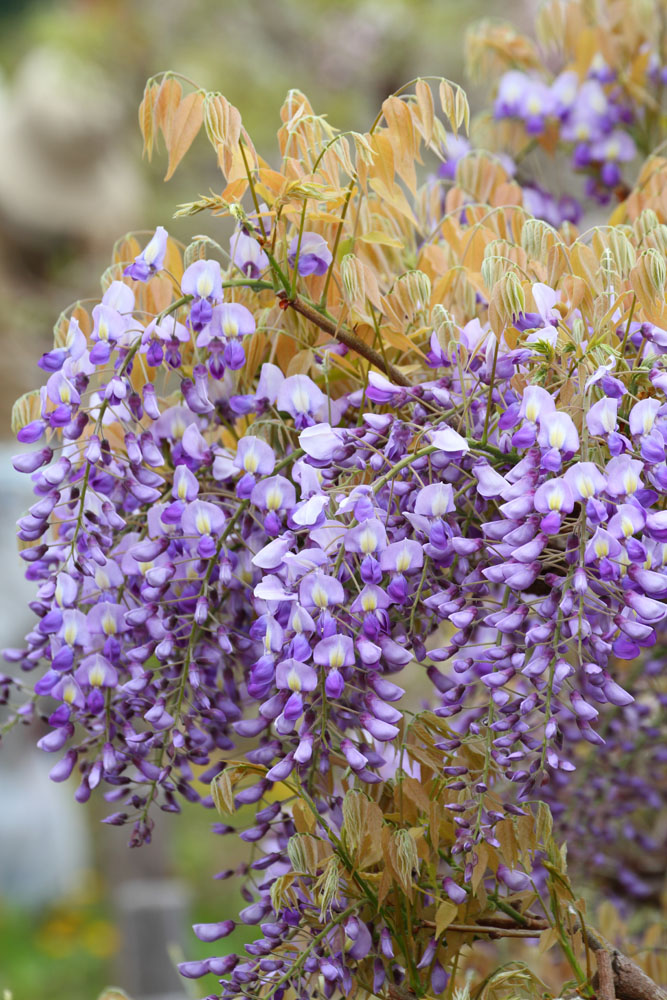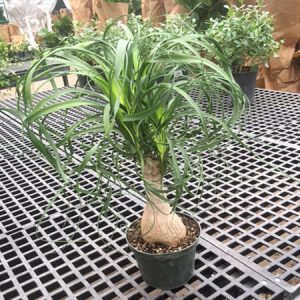Description
Wisteria –
There are about 10 twinning woody, deciduous climbers in this genus. They natural occur in moist woodlands and on stream banks in China, Korea, Japan, and Central and Southern USA. They have alternate, pinnate, dark green leaves, to 14” or more long composed of 9-19 ovate to lance shaped or elliptic leaflets. They are grown for their showy, drooping sprays of pea like, perfumed flowers, borne in spring or summer, sometimes with the leaves. Flowers are followed by poisonous bean like green seed pods. Train against a wall, into a large tree, over a sturdy arch or pergola, or as a standard. All parts may cause severe discomfort if ingested.
Wisterias like a sunny or partial shady position and humus-rich, well drained soil. Although they take some time to establish, they become large, vigorous plants and need strong support. Prune after flowering, and again in winter only if really necessary to control size.
Prone to dieback, crown gall, leaf spots, virus diseases, Japanese beetle, aphids, leaf miners, scale insects and mealybugs.
W. brachybotrys ‘Murasaki Kapitan’ – W. venusta ‘Violacea’ – W. venusta f. violacea – W. venusta – Silky Wisteria – This twinning climber from Japan climbs to 30’ feet or more high. It’s pinnate, softly hairy leaves, to 15” long, each composed of 9-13, ovate to lance shaped leaflets. Pea-like, fragrant, lavender-blue flowers with prominent white, slightly yellow tinged markings on the standards flowers are produced in racemes, to 6” long, in early summer, they are followed by bean like, green seed pods, to 8” long.
Zones 5-8





